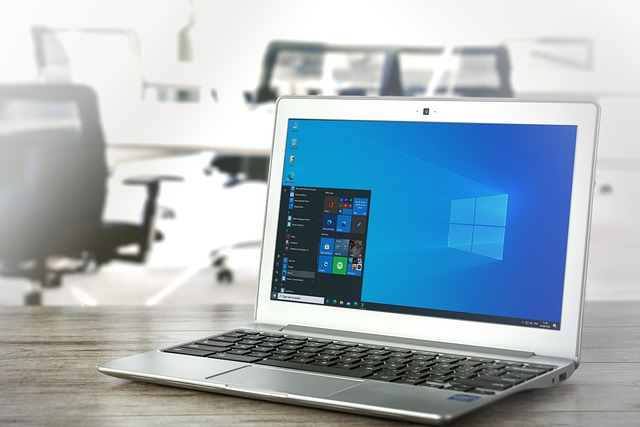Upgrading to Windows 11 has been a seamless experience for many, but for some, it’s like stepping into a high-tech maze where the walls are made up of lost files. The promise of a new, sleek interface and enhanced performance soon fades away as soon as important documents, photos and your precious data is lost, and panic takes place of excitement. Fear not! This article will guide you the way out of that web. We will explore effective solutions, focusing on Windows data recovery software of Stellar, to help you recover your lost files and enjoy all the benefits of Windows 11 without any stress.

Post Contents
Standard Issue: Missing Files After Upgrade
Before diving into the recovery process, let’s understand why sometimes data is lost after updating windows. The upgrade mechanism involves significant changes to system files and settings, which can sometimes result in misplaced or overwritten data. The most common causes are:
• System errors during installation: Errors or interruptions can cause files to be transferred improperly.
• Compatibility issues: Older files may not be properly compatible with newer system configurations.
• User error: mistakes made during the upgrade process, such as choosing the wrong options or failing to back up data.
Identifying these causes can help better prevent future data loss. But for now, let’s focus on safety.
Hidden Treasures: Steps for Manual Data Recovery
Check the Windows.old Folder During the upgrade, Windows 11 creates a Windows.old folder, which contains data from your previous installation. This folder can be a gold mine for recovering lost files. Here’s how you can get one.
1. Open File Explorer: Navigate to your C: drive.
2. Locate the Windows.old Folder: Locate the Windows.old folder, which should be near the top of the directory.
3. Search and Remove: Search folders to find your lost files. Copy them and paste them to another location.
You may also check OneDrive to see if the data was in your cloud storage before the upgrade. Sometimes, files synchronize automatically, and local copies do not show up where they should be expected to be.
In case everything fails, you may consider using a Windows data recovery software specifically for this purpose. Many of these tools offer free trials that scan recoverable items before purchasing.
The Ultimate Tool: Stellar Data Recovery for Windows
When it comes to recovering lost files, Windows data recovery software by Stellar stands out as a powerful tool. This software is designed to tackle a variety of data loss scenarios with ease. Here’s a step-by-step guide to using it:
- Install the Software: Start by downloading the windows data recovery software from the official website of Stellar. Install it on your PC by following the instructions.
- Launch the Software: Once the software is installed open it and select what type of data you want to recover. The data recovery software gives various type of data option you want to recover all like documents, emails, photos, and videos.
- Select the Location: Choose your data loss location, i.e. select the drive or folder from where your data is lost or you last saw your files.
- Scan System: Start the scan process by clicking on the quick scan button. If you don’t get the result in quick scan you can also opt for deep scan which thoroughly search for recoverable files.
- Recover the Files: Once the scan is done, you can preview your files. Select the ones you want to recover and save them to a safe location.
Tips for Preventing Data Loss During Upgrades
Safety Net: Enable File History and Backup
To prevent future data loss, take advantage of Windows 11’s built-in backup features. File History and Backup and Restore (Windows 7) can save you from similar headaches down the road. Here’s how to set them up:
- File History:
- Go to Settings > Update & Security > Backup.
- Click on Add a drive and select an external drive or network location.
- Turn on File History to automatically back up files.
- Backup and Restore (Windows 7):
- Go to Control Panel > System and Security > Backup and Restore (Windows 7).
- Click Set up backup and follow the prompts to choose what and where to back up.
Cloud Nine: Use Cloud Storage Services
Cloud storage services like OneDrive, Google Drive, and Dropbox offer an additional layer of protection for your files. These services automatically sync your data to the cloud, making it accessible from any device and recoverable even if your local files go missing. To maximize their benefits:
- Sign In and Sync: Ensure you are signed in to your preferred cloud service and that sync is enabled.
- Backup Important Folders: Regularly back up critical folders to the cloud.
- Access and Recover: If files go missing, check your cloud storage account to download and restore them.
Proactive Measures: Keep Your System Healthy
Maintaining your system’s health can prevent data loss. Regularly update your software, run antivirus scans, and clean out unnecessary files. Additionally, avoid interrupting the upgrade process and double-check all prompts before proceeding with any significant system changes.
Conclusion: Your Data Rescued, Your Mind at Ease
Upgrading to Windows 11, can be very exciting as it brings new features and interface, but the fear of losing data after transformation can be very stressful. With powerful tools like Stellar data recovery for Windows, reliable Windows.old folder, and proactive backup strategies, you can recover your data and can do a confident upgradation of windows
The Key is not just in recovering lost data but also preventing any loss in future. By staying vigilant and ensuring regular backups, you can enjoy all the advantages of Windows 11 without tension of data being lost. Embrace the new technology and secure in the knowledge that your important data is safe. Step into the future with peace of mind knowing that you have taken necessary steps to secure your digital life.